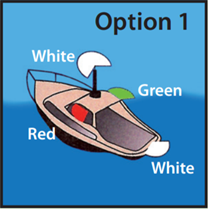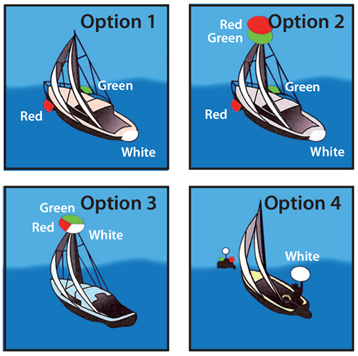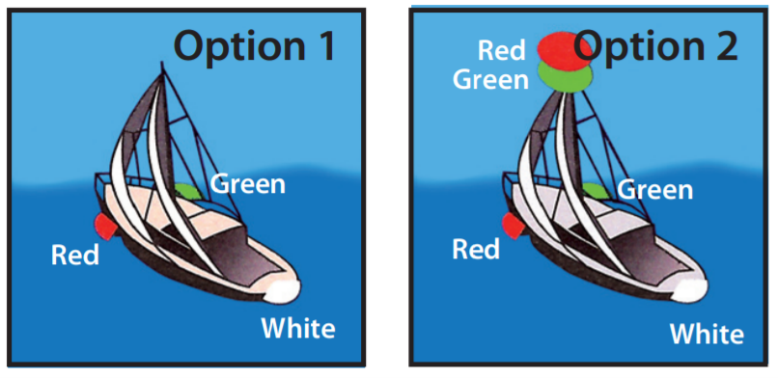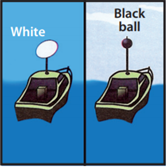10% OFF WITH CODE:
BLACKFRIDAY10
When Should You Use Navigation Lights on a Boat?
June 1, 2021
Boats, like cars, have a number of rules and regulations that must be observed when it comes to navigation lights, which are one of the most critical safety measures that need to be applied when operating a pleasure craft.
Navigation lights must be displayed on a boat if you are operating your boat at night or in poor visibility. The term “night” here refers to the period between sunset and daybreak. During the daytime, poor visibility can refer to heavy fog or even inclement weather, such as rain or snowfall.
In this article, Drive a Boat Canada explains all the rules and regulations that need to be followed for navigation lights when driving a boating in Canada.
What are the regulations that apply to boat navigation lights?
There are two regulations that apply to navigation lights in Canada. First, the Small Vessel Regulations (SVR) specify the safety equipment that must be carried on board depending on what type of boat you have and how big it is. All equipment, including navigation lights, must be in excellent condition and tested before each boat outing, according to the SVR.
Second, the Collision Regulations, which specify how and when to use navigation lights, also apply. Operators must be able to distinguish other boats travelling in the vicinity and the direction which they are travelling in, whether the boat is power-driven or a sailboat and whether the boat is moving or anchored by checking the navigation lights in order to avoid a collision.
Types of boat navigation lights and colours
Below is a list of the many types of boat navigation lights, along with the colours that correspond to them:
- All-round light: a light that shines continuously over a 360-degree arc of the horizon
- Side lights: a green light near the bow on the starboard side and a red light near the bow on the port side, each showing an uninterrupted light across an arc of the horizon of 112.5 degrees
- Stern light: a white light set as close to the stern as feasible, displaying an uninterrupted light over a 135-degree arc of the horizon
- Masthead light: a white light at the fore and aft centreline of the boat that must be visible from two miles distant and across 225 degrees
- Blue flashing light: an all-around blue flashing light that identifies government and law enforcement (police) vessels
- Yellow light: a yellow light is used when a vessel is towing and has the same features as a stern light
- Special flashing light: a yellow light placed at the front end of a towing vessel or a vessel being towed
Navigation light requirements by boat type and length
As a boater, you should always double-check to ensure that you have the proper navigation lighting for safe and legal boating. Here are the various requirements for each type and length of boat:
Power boats under 12 m (39’4”)
- 1 masthead light (with a second masthead light being optional)
- Sidelights and 1 stern light OR 1 all-round white light and sidelights
Power boats from 12 m (39’4”) to under 50 m (164’1”)
- 1 masthead light (with a second masthead light being optional)
- Sidelights and 1 stern light
Sailboats under 7 m (23’)
- Sidelights
- 1 stern light, and
- OPTIONAL – 2 all-round lights in a vertical line, the upper being red and lower green
OR
- 1 lantern, combining the sidelights and stern light above
OR
- Have a white-lighted electric torch or lantern that you must use far enough ahead of time to avoid a collision
Sailboats from 7 m (23’) to under 20 m (65’7”)
- Sidelights
- 1 stern light, and
- OPTIONAL – 2 all-round lights in a vertical line, the upper being red and lower green
OR
- 1 lantern, combining the sidelights and stern light above
Sailboats 20 m (65’7”) and over
- Sidelights
- 1 stern light, and
- OPTIONAL – 2 all-round lights in a vertical line, the upper being red and lower green
Human-powered boats
- Have a white-lighted electric torch or lantern that you must use far enough ahead of time to avoid a collision
- OR
- The same lights as listed above for sail boats, with the same boat length taken into account
Anchored boats under 7 m (23’)
If the boat is in or near a small channel, fairway, or anchorage, or in an area where other boats regularly navigate:
- 1 all-round white light at night or 1 ball during the day, and
- An additional all-round white light
OR
- 1 all-round white light
Anchored boats from 7 m (23’) to 50 m (163’1”)
If the boat is in or near a small channel, fairway, or anchorage, or in an area where other boats regularly navigate:
- 1 all-round white light at night or 1 ball during the day, and
- An additional all-round white light
OR
- 1 all-round white light
Conclusion
There you have it. That about covers all the basic rules and regulations of boat navigation lights in Canada. You can now feel confident that you will be boating safely and legally on your next outing or, if you haven’t yet obtained your boat license in Canada, that you will ace this section of the online boating course.
If you have any questions about taking the official Canadian boater safety course online, feel free to contact us today and we’ll gladly answer you. Happy boating!








